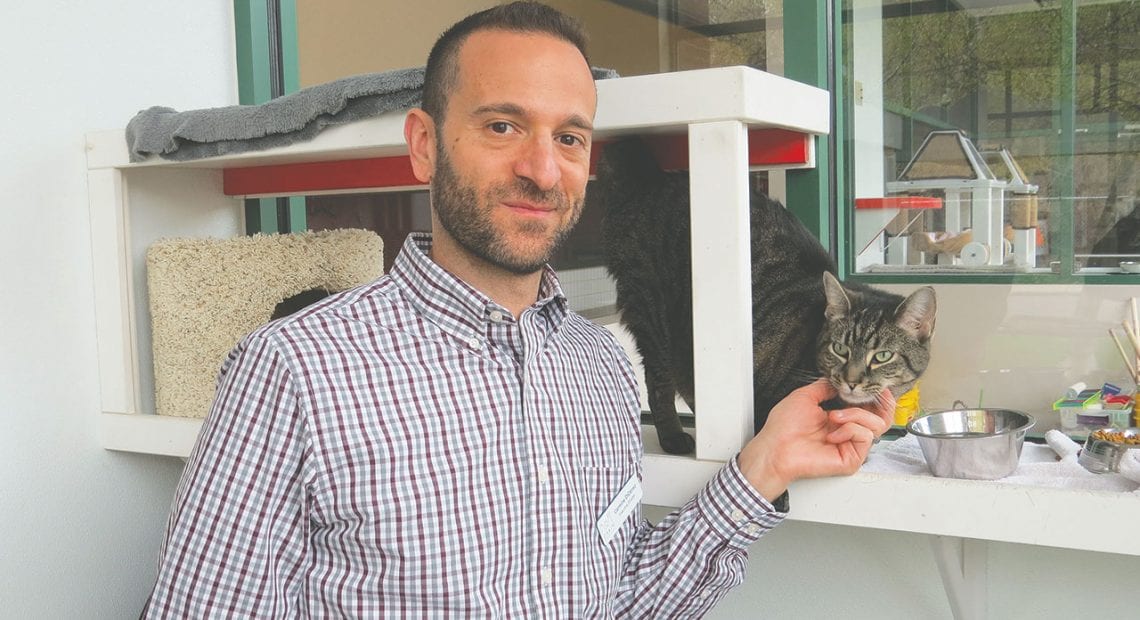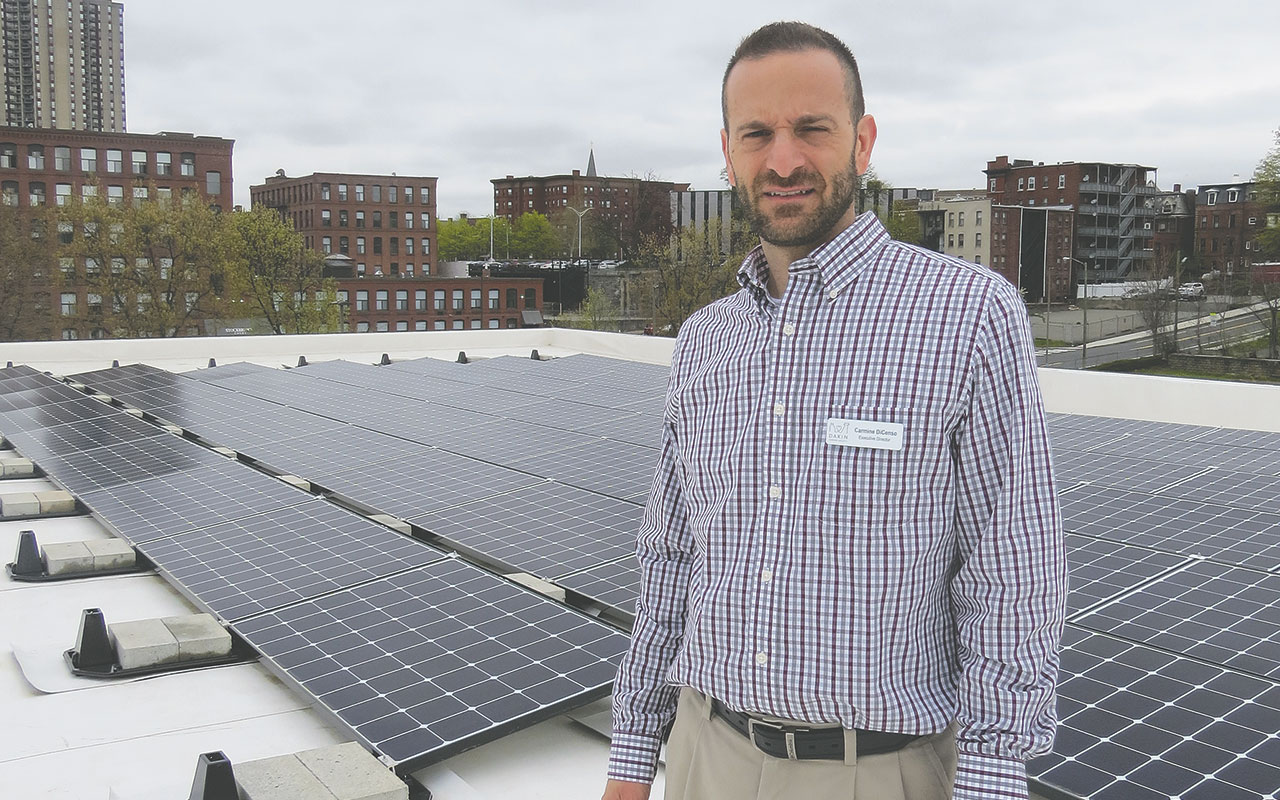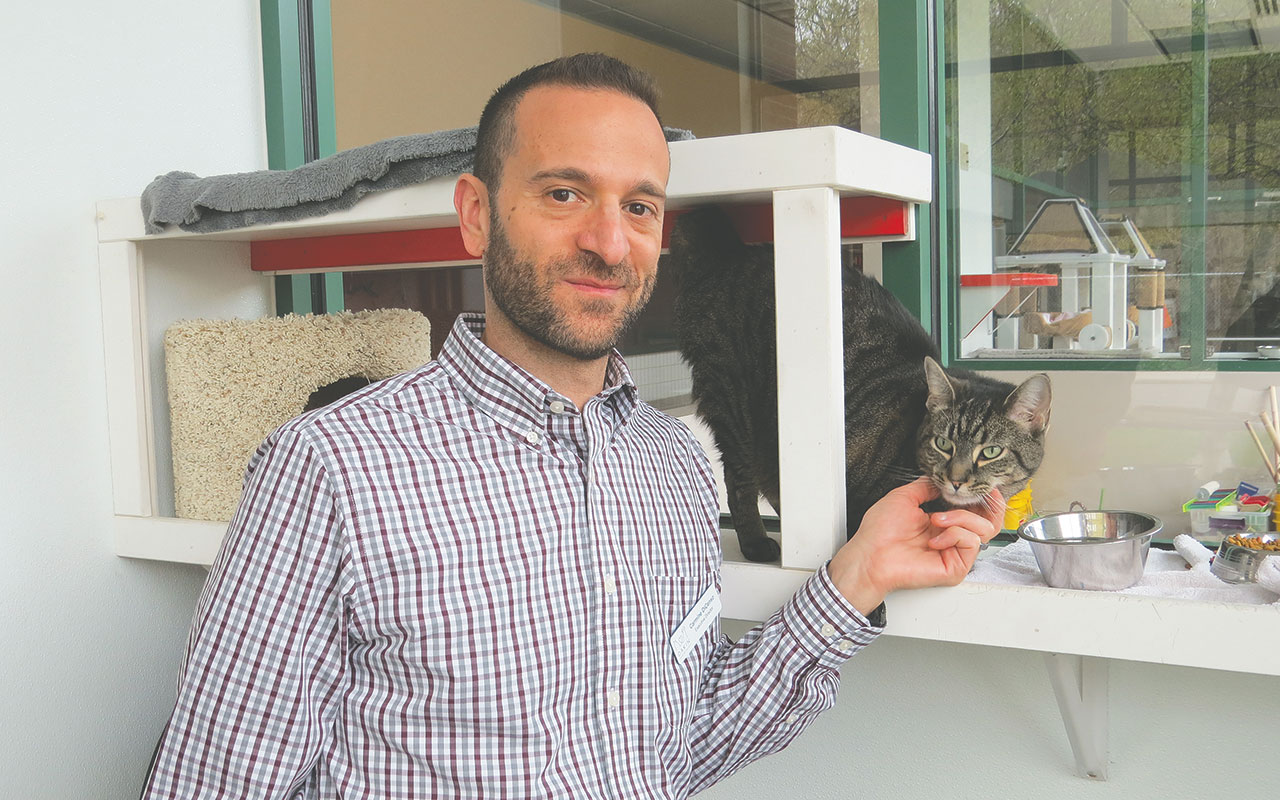Pet Project
Carmine DiCenso says there’s a changed atmosphere at the Dakin Humane Society facilities in Springfield and Leverett these days — in many different respects.
Indeed, due to comprehensive spaying and neutering programs, overpopulation among canines and felines is far less of a problem than it was even a few years ago, and, as a result, there are, generally speaking, fewer animals up for adoption in these centers.
Meanwhile, societal changes have made adoption a more accepted and therefore more popular practice. “Culturally, everyone wants to rescue a pet now,” said DiCenso, Dakin’s executive director, adding that, as a result, many of the pets that wind up in the adoption centers are not there for long stays.
Those that are tend to be older and often have physical and/or behavioral-health issues and thus need more time at the shelter to become ready for adoption, said DiCenso. “We’re spending more time and resources to rehab animals, and that’s a bigger challenge,” he explained, adding that the agency is shifting its focus to work with animals in the community — by providing food, vaccinations, and other necessities — with the goal of keeping them out of shelters.
But these are not the only changes to the environment at Dakin.
The others involve energy-efficiency, and while many cannot be seen (such as the solar installations on the roofs) or heard, they are important developments in Dakin’s ability to carry out its broad mission.
That’s made clear by current numbers and those that DiCenso is projecting for a few years out. He expects that, when the latest round of planned improvements — efforts to better seal skylights and windows to improve efficiency and replacement of a 21-year-old, very inefficient inefficient chiller — are implemented, the nonprofit agency will see annual energy savings approaching $50,000 at the Springfield site. In six to 10 years, he projects that the number will be closer to $200,000.
“And that money would be diverted right into director programming,” he explained, “and meeting the needs of our animals who need more from us — here in the shelter and out in the community.”
Backing up a bit, DiCenso said Dakin has undertaken a number of significant steps to become more energy-efficient over the past few years, many in what amounts to a partnership with Eversource, largely because it needed to, especially in Springfield.
The 47,000-square-foot facility, formerly home to the MSPCA, was built just over 20 years ago, a different era when it comes to energy efficiency, said DiCenso, adding that discussions about doing something with a building that had become a large drain on the budget began years ago.
And with a two-year, $95,000, no-interest loan from Eversource as part of the utility’s small-business retrofit program (see related story, page 18), Dakin has addressed many of these glaring needs. Indeed, starting in late 2016, the nonprofit has undertaken several initiatives, including:
• Lighting conversions. Dakin switched from fluorescent to LED lighting in many areas of the Springfield building. The parking-lot lights, formerly multi-vapor models, have also been converted to LED. Meanwhile, occupancy-sensor switches were installed in several rooms, replacing traditional on/off switches that are often left on long after people have left the room.
• An HVAC upgrade, specifically adding a dedicated domestic hot-water system that uses just the right amount of energy needed to have hot water on tap. Previously, Dakin relied on large boilers to heat even the smallest amounts of hot water.
• Variable-frequency drives. As part of the HVAC upgrade, Dakin added these drives to achieve more scalability in controlling indoor climate, said DiCenso, adding that it also installed carbon-dioxide detectors to control the amount of outside air (hot or cold) coming into the building to control costs.
“The fans were either on or off, and it took a tremendous amount of energy for them to cycle up and turn on fully, and that’s a waste of energy,” he explained. “What we have now are variable drives, which slowly build up to speed and only bring them to the level you need; instead of going from zero to 100 every time you turn them on, if they only need 25% of the energy, that’s what they’ll turn on to.”
As for the solar installations, installed in 2018, they were made possible by a gift from area residents Brian Adams and Morey Phippen, who have funded solar projects for a number of nonprofits in the area, said DiCenso, adding that, through these installations, both facilities are realizing substantial savings on their electric bills, especially the Leverett site.
“It will take a few years to really see those cost savings,” he said. “But we’ll get a bigger bang for our buck in Leverett because it’s a smaller building and the solar installation will be able to take more of the load; we do think our energy costs will drop 50%.”
Between the two buildings, as he noted, the overall savings will likely exceed $200,000, a budgetary windfall, if you will, that will be needed in the years to come.
That’s because, while the landscape has changed, overpopulation is no longer a real issue, and rescuing animals has become more popular, there are still many needs to be met when it comes to that constituency.
Because it now far more energy-efficient, Dakin will be better able to meet them.
— George O’Brien







